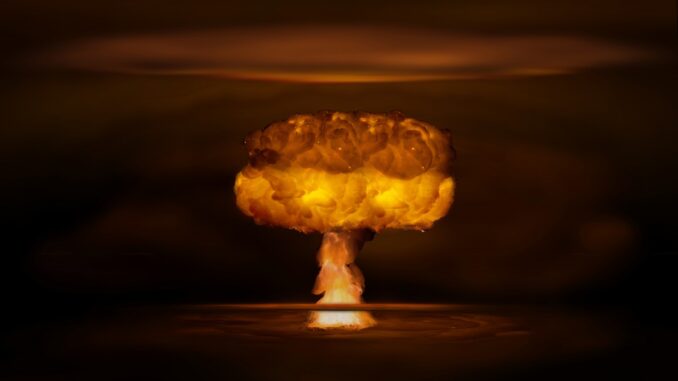
[ad_1]
Special Report
A recent survey showed that 77% of Americans believed that a nuclear, chemical, or biological attack taking place somewhere in the world was a real or very real threat. That figure, part of a survey conducted by global marketing firm Ipsos for the Halifax International Security Forum, represents a 6% increase from the previous year’s results for Americans.
If the West was lulled into a sense of security during the relative period of calm since the Cold War, it now has to come to grips with this long unthinkable notion. From intercontinental ballistic missiles that can travel thousands of miles to submarines that can launch nuclear weapons, an all-out nuclear war could reach anywhere on the planet, including the U.S. (Here’s how far the most powerful missiles can travel.)
Russia conducted its first test of the Sarmat ICBM in late April. The Sarmat can carry 10 nuclear warheads and decoys. As military experts warn that the use of nuclear weapons is consistent with Russian military doctrine, opinions differ as to how to deal with the threats or how to react should the need arise. (This is what a nuclear war would do to the world.)
To find how a nuclear detonation could affect the 25 largest U.S. metropolitan areas (by population), Darlinez News. used Nukemapa site that simulates detonation of nuclear bombs. We have chosen two typical warhead yields, the equivalent of 100 kilotons and 800 kilotons of TNT, detonated in the air over the center of these cities. (The bombs that devastated Hiroshima and Nagasaki in 1945 had yields of 16 and 21 kilotons, respectively.) Metropolitan areas are ordered by total population, from smaller to larger.
Click here to see casualty projections in U.S. cities in a nuclear explosion
Click here to see our detailed methodology
The two yields would have different blast ranges, and the farther from the point of detonation, the lighter the damage becomes. Not surprising, more densely populated metropolitan areas would sustain many more deaths and higher casualty figures. More than 1.5 million people would die if an 800-kiloton bomb detonated over Manhattan. More than 8 million people would feel the effects of the blast. In less dense cities, far fewer people would be affected. In Dallas, which ranks fourth largest by population, such a bomb would lead to “only” 220,500 deaths. There are also weapons with much larger yields, and in the event of an attack, it is likely multiple warheads would be directed at a city, not just one.
Regardless of whether one bomb or many were to be detonated over a city, the number of deaths and injuries, not to mention the immediate and lasting damage to structures and the area as a whole, is inconceivable.
Sponsored: Tips for Investing
A financial advisor can help you understand the advantages and disadvantages of investment properties. Finding a qualified financial advisor doesn’t have to be hard. SmartAsset’s free tool matches you with up to three financial advisors who serve your area, and you can interview your advisor matches at no cost to decide which one is right for you. If you’re ready to find an advisor who can help you achieve your financial goals, get started now.
Investing in real estate can diversify your portfolio. But expanding your horizons may add additional costs. If you’re an investor looking to minimize expenses, consider checking out online brokerages. They often offer low investment fees, helping you maximize your profit.

Leave a Reply